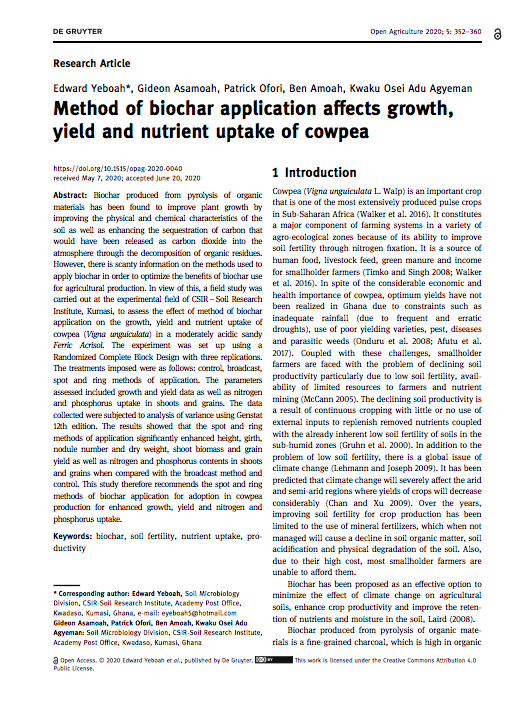Back to Library
Method of biochar application affects growth, yield and nutrient uptake of cowpea

Published by:
Document
Download
Online Location
https://doi.org/10.1515/opag-2020-0040
Publication date
12/08/2020
Number of Pages
9
Language:
English
Type of Publication:
Articles & Journals
Focus Region:
Global
Focus Topic:
Climate / Weather / Environment
Land / Water / Resource Management
Nutrition / Food Systems
Commodity:
Crops
Author
Edward Yeboah, Gideon Asamoah, Patrick Ofori, Ben Amoah and Kwaku Osei Adu Agyeman
ABSTRACT
Keywords: Cowpea production, crop yield